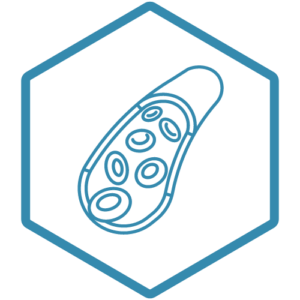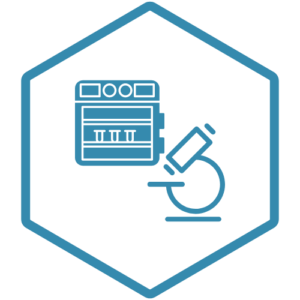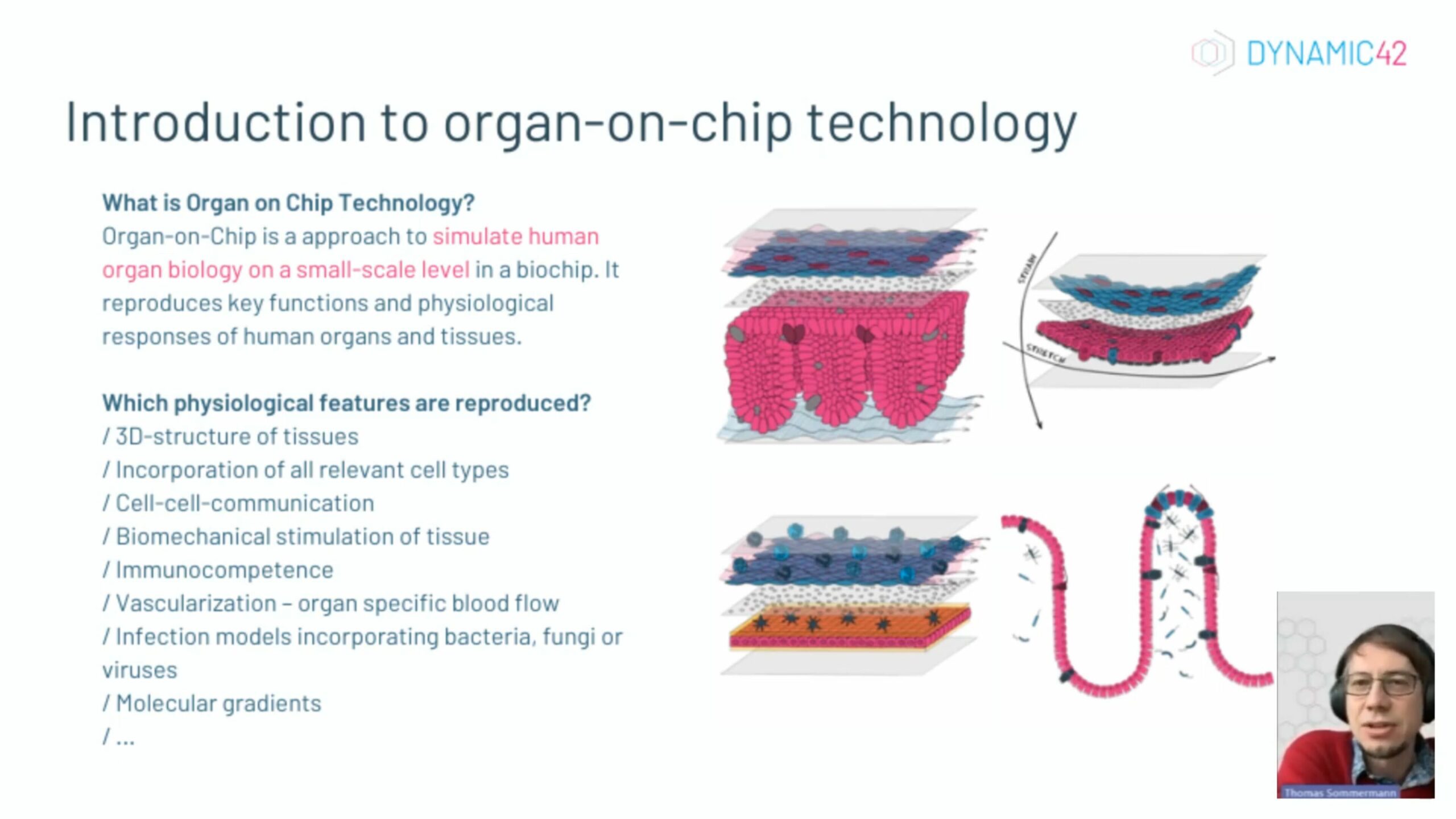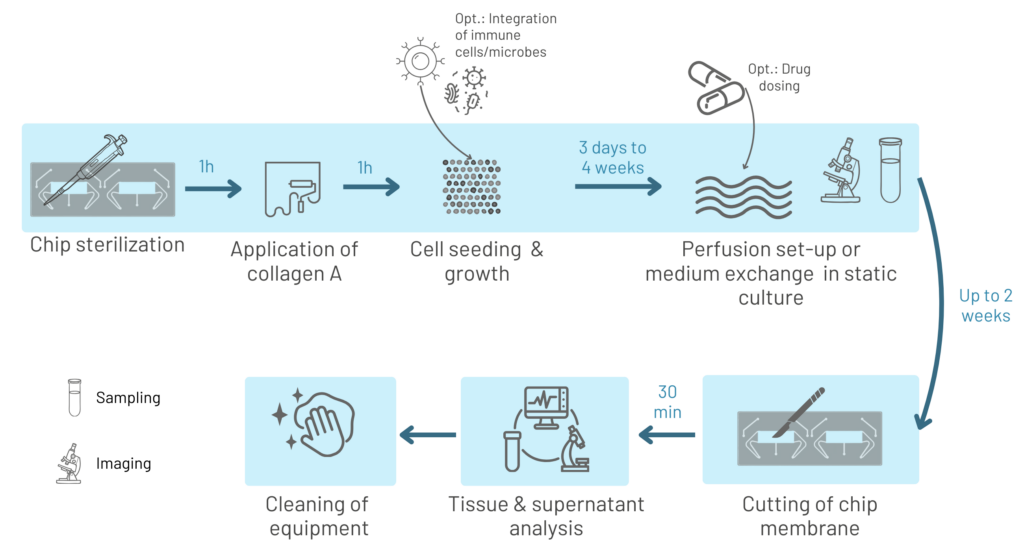
DynamicOrgan System

Build human in vitro disease and infection models with the DynamicOrgan System. A system that includes pumps, biochips, consumables and the freedom to keep using standard laboratory equipment. A dynamic system that will help you get greater and more meaningful insights into human biology swiftly and without capital spending.
What is Organ on Chip Technology?
Simulate human organ function
Organ-on-chip is a technology that reproduces the biology of human organs on a biochip on a small scale. Such organ models reproduce key functions and physiological responses of human organs and tissues, providing human-relevant data for preclinical drug testing and biomedical research.
Physiological flow conditions
Different flow patterns can be achieved through the perfusion of the tissues via microfluidic pumps: pulsatile and laminar – such as in the healthy human body. Watch medium flow through one of our biochips starting from a reservoir, going through the channels into the biochip chambers with an epithelial and endothelial cell layer.
The biochip
Biochips with cell culture chambers, biological or biocompatible artificial membranes and a variety of channel geometries provide the conceptual basis for Organ-on-Chip technology. The channels of such biochips are used to introduce human cells of an organ into the cell culture chamber, to arrange, combine and separate these cells in an in vivo-like fashion and to supply these cells continuously with nutrients. They provide a frame to implement in vivo-like flow patterns similar to the human blood stream.

Membrane – tissue interface and scaffold
The integrated membranes serve as scaffold to arrange human cells, to provide them structural support and a flexible substrate that can mediate mechanical stimulation. Here, complex tissues and tissue-tissue interfaces are created that facilitate intense cell-cell communication, signaling and transport processes.

Integration of immune component
The immune system is a critical component of the human body, playing a vital role in protecting against infections, eliminating diseased cells, and maintaining tissue homeostasis. Via integration of resident and circulating immune cells, organ models can replicate the cellular complexity of the human immune system.
Integration of a microbiome and pathogens
Complex organ models allow for the integration of a microbiome or pathogens to enable the establishment of complex disease and infection models.
Application areas
Tissue Barrier Models/ Transport Studies
Immune Cell Perfusion & Migration
Drug Safety Profiling
Antibody Safety and Target Profiling
Host-Microbiome Interaction
Infection & Disease Modelling

Why choose the DynamicOrgan System?
Human relevant data

Multicellular tissue

Vasculature

Immune cells

Microbiome

Pathogens
The open platform

No proprietary equipment or capex spending

Easy handling/integration

Works with established standards

Work with equipment you already have

Scalable sample number and tissue complexity
The DynamicOrgan System workflow
Watch our scientist work with the DynamicOrgan System
This is a short summary video of the most relevant steps conducted in the lab to set up an organ-on-chip model with the DynamicOrgan System. Showcasing steps such as biochip sterilization, cell seeding, perfusion set up and visualization under the microscope.
How does organ-on-chip compare to other models?

Read what our customers have to say
What is included in the DynamicOrgan System

The DynamicOrgan System contains:
Peristaltic Pump
DynamicOrgan Developers Kit
The DynamicOrgan Developers Kit contains:
/ Biochips (BC002)
/ 2-Stop Tubing
/ Connectors (Adapter)
/ Reservoirs











